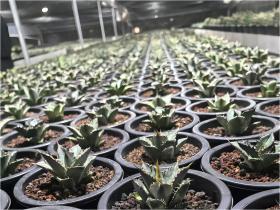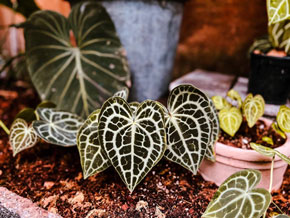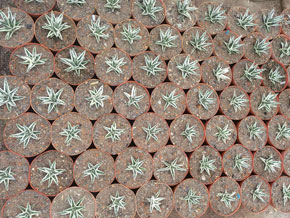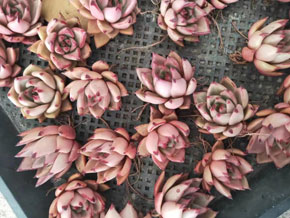
 Advanced Urban Style Klein Crystal Anthurium Candle Indoor Potted Plant
Advanced Urban Style Klein Crystal Anthurium Candle Indoor Potted PlantAuthor: MinHui Plants
Klein anthurium candles with suede luster, delicate and high-grade texture, each leaf is in the shape of loving you, and the veins are shining with silver light spots.
Jun 04, 20231213
 Agave cultivation methods and precautions
Agave cultivation methods and precautionsAuthor: MinHui Plants
Agave, also known as Agave palm, belongs to the Agave family. Agave is a perennial evergreen large herb plant native to Mexico. Because its leaves are relatively firm and green in all seasons, it is one of the important materials for garden cultivation. , grown in greenhouses in the north of the Yangtze River Basin for cultivation. He prefers fertile, well-drained soil. It usually takes decades for the place of origin to bloom, and the sow will die after development, and only one flower can be pollinated to bear fruit. His scriptures are shorter, and the more they generate oval shapes. The smaller one is about 145 to 25 centimeters. Larger ones may grow to a meter level. The smooth green ones have a whitish band, and the flowers are yellow-green and fleshy.
Jun 04, 20231046
 Do succulents need root trimming when repotting?
Do succulents need root trimming when repotting?Author: MinHui Plants
When repotting succulents, it may be necessary to trim their roots depending on different situations. If the succulent has been planted for a short period of time and is growing well, such as two to three months or less than half a year, there is no need to replace the soil. It is recommended to keep the roots and soil together and avoid damaging the root system while repotting to ensure the succulent continues to thrive.
Jun 04, 20231131
 Aeonium Ice warrior variegata: Discovery and nurturing process
Aeonium Ice warrior variegata: Discovery and nurturing processAuthor: MinHui Plants
Name:Aeonium Ice warrior variegata, Female parent:Aeonium Ice warrior, Discovered by:A greenhouse owner in Shandong China,Breeder:Xiao Fei of Oni greenhouse, Nurturing time:in 2021, Plant characteristics:Its main body is bright yellow, the edges of the leaves are red, and the variegated edges of the leaves are wavy
Apr 03, 2023756
- 1

